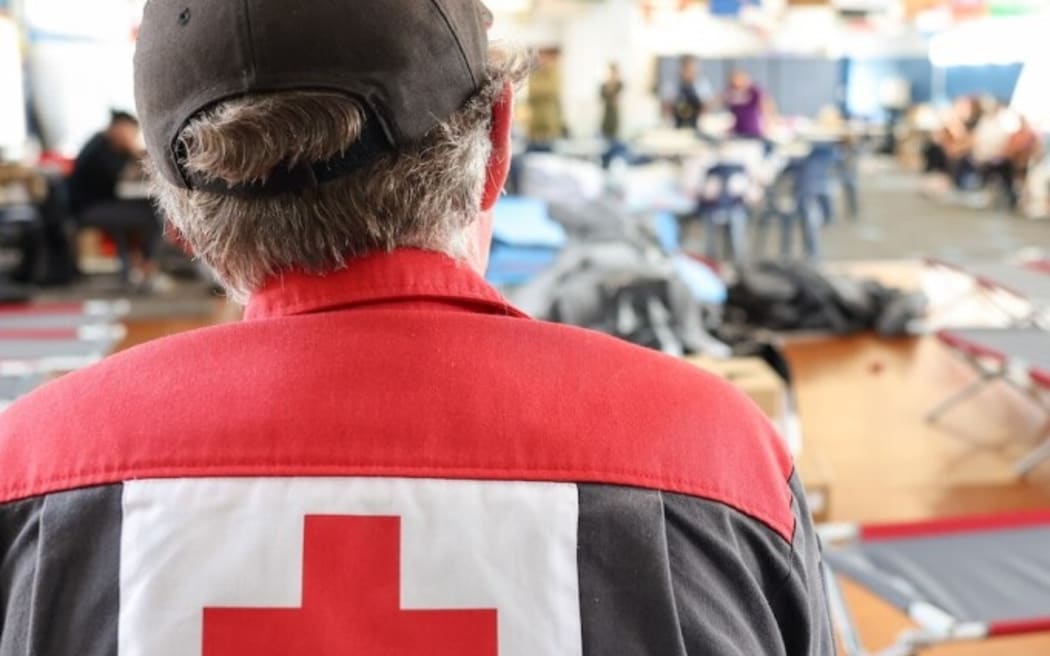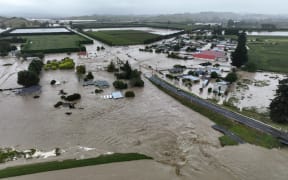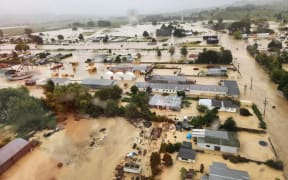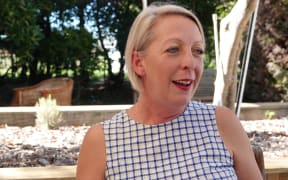
A Red Cross worker during the Cyclone Gabrielle response in March. Photo: Supplied/ Red Cross
The Red Cross said its disaster relief fund was taking time to trickle into affected communities because the organisation wanted to avoid repeating mistakes it made following the Christchurch earthquake.
New Zealanders had so far donated $22 million to the fund for those affected by Cyclone Gabrielle and the flooding, but just a fifth of that had been dished out.
Red Cross secretary-general Sarah Stuart-Black said they were taking time to assess the scale of the need and work with councils, government and iwi to make sure they were not doubling up on donations.
After the Christchurch earthquake, Red Cross moved too soon and attracted criticism for duplicating funding and funnelling it to the wrong places, she said.
"We've tried to take account of that in the way that we've thought about this fund, trying to move quickly enough and using things like pilot projects to go, let's just see if we can get the logistics and the arrangements [...] up and running.
"And then what would it take to scale that up, and deliver it in other affected areas?"
An example of the test-first approach was a pilot programme replacing essential household items for whānau with stickered homes in the Tai Rāwhiti community of Te Karaka.
Once the Red Cross determined the ins and outs of how it worked, the rest of the motu may get the same support.
But in the Hastings suburb of Pakowhai, Geoff Downer said he just needed cash - urgently.
Downer's home and two businesses were destroyed by Cyclone Gabrielle. He applied to the Hawke's Bay Disaster Relief Fund - which the Red Cross had donated to - for the maximum available of $1000, and got half that.
Rather than in-kind support and donations, Downer wanted every affected family to receive a lump sum to spend how they saw fit.
"Every person, every family, every household needs different things, and the only way you can fairly achieve that for everybody is to give them a certain amount of money.
"Five hundred dollars doesn't cut the mustard - it doesn't even cover the grocery bill for the last nine weeks."
Fund still open for donations
But while the immediate need remained, the long-term loomed - with winter around the corner and the effects of climate change promising more severe weather events.
Hastings Deputy Mayor Tania Kerr is also the Mohaka ward councillor, representing some of the most devastated rural communities like Omahu, Puketapu, Rissington and Eskdale.
Kerr said she told the Red Cross last week the greatest impact it could have was by helping them be better prepared.
"We spoke about identifying hubs within the rural communities [...] and creating that into a Civil Defence site.
"That would have available a generator, fully wired into the local hall, plenty of clean water, a supply of food, some way of communicating - so that could be radios, but it could be these new Starlinks."
The Red Cross may still be ironing out the details, but Stuart-Black said the majority of its fund would be spent by August, and the remainder within a year of the cyclone.
She said the fund was still open for donations, and would remain open until Red Cross decided there was enough to meet the need.





